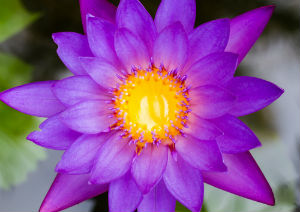 Kamala (also known as Kamcela, Spoonwood, or Mallotus philippinensis) is a well-known plant coming from the humid tropical forests of Australia, the Philippines, India, Papua New Guinea, Malaysia, Africa, Southern Arabia, and southern China. First mentioned in the ancient Indian text, The Kurma Purana, kamala’s health-supportive properties have been highly revered the world over for thousands of years.
Kamala (also known as Kamcela, Spoonwood, or Mallotus philippinensis) is a well-known plant coming from the humid tropical forests of Australia, the Philippines, India, Papua New Guinea, Malaysia, Africa, Southern Arabia, and southern China. First mentioned in the ancient Indian text, The Kurma Purana, kamala’s health-supportive properties have been highly revered the world over for thousands of years.
Kamala is a firm staple in India’s traditional Ayurvedic practices and is currently still being used as a natural and potent herb in the developing world. The narrow-stemmed kamala tree grows up to twenty meters high, although smaller evergreen versions grow wild in India. The most used component of kamala is the reddish-brown fruit. The fruit is crushed and dried and processed into a fine herbal powder. [1]

The Health Benefits of Kamala
Although kamala has a number of potential health benefits, many traditional societies have valued the plant as an aid for combating harmful organisms, particularly those involving the skin and the GI tract. While the fruit and its hairs are most often used for internal cleansing purposes, the bark of kamala is also an excellent anti-microbial agent. Studies have found that the glands and hairs of the kamala fruit are a useful anthelmintic, possibly effective for reducing fascioliasis, a condition related to liver flukes and other forms of intestinal worms. Several studies have reported that kamala resin can offer significant purgative action in the GI tract. In animal trials, the resin was able to eliminate infestation of tapeworms in the small intestines by 78.21%. [2]
Kamala may also offer the following health benefits and actions:
- A quick and effective purgative for elimination of any toxic activity in the GI tract.
- A cutaneous purifier, often used to prevent scabies, ringworm, skin pustules, leprosy, and other cutaneous eruptions.
- Potent taenifuge for expelling tapeworms. Kamala is ranked second only to male fern root in its ability to eliminate intestinal worms.
- Potent anthelmintic, expelling parasites, especially the Taenia solium variety.
- Excellent general digestive support and laxative, promoting increased bowel action and powerful detoxification.
- Remedy for various ocular diseases in traditional forms of medicine. [3]
Chemical Components and Actions
The active constituents of kamala are associated with the tannic acids and volatile oils of the fruit and hairs. Kamala is also composed of health-boosting resins, crystallines, flemingin, and homoflemingin. These plant-based chemical constituents eradicate worms in the body through a mechanism of creating a harsh intestinal environment that is toxic to harmful organisms. The resins, acids, and oils cause worms to become immobile, preventing the worms’ larvae from attaching themselves to the interior lining of human intestine walls. Not only does this cleanse the system of parasitic organisms, it also promotes overall digestive health.
Other Uses of Kamala
Kamala can be used as a natural oil for cosmetic preparations. It has also been used traditionally as a natural dye for silks and wool, beverages and foods, and its pulp has been used to make tools, paper, and brushware.
References (3)
- Thomas S. Blair. Botanic Drugs Their Materia Medica, Pharmacology and Therapeutics. The Therapeutic Digest Publishing Company.
- Gupta SS, Verma P, Hishikar K. Purgative and anthelmintic effects of Mallotus philippinensis in rats against tape worm. Indian J Physiol Pharmacol. 1984 Jan-Mar;28(1):63-6.
- Verma P, & Hishikar K. Experimental Evaluation of Anthelmintic and Purgative Activity of Myrsine Africana Fruits. Anc Sci Life. 1983 Oct-Dec; 3(2): 82-84.


